Federal Interagency Reentry Council (FIRC)
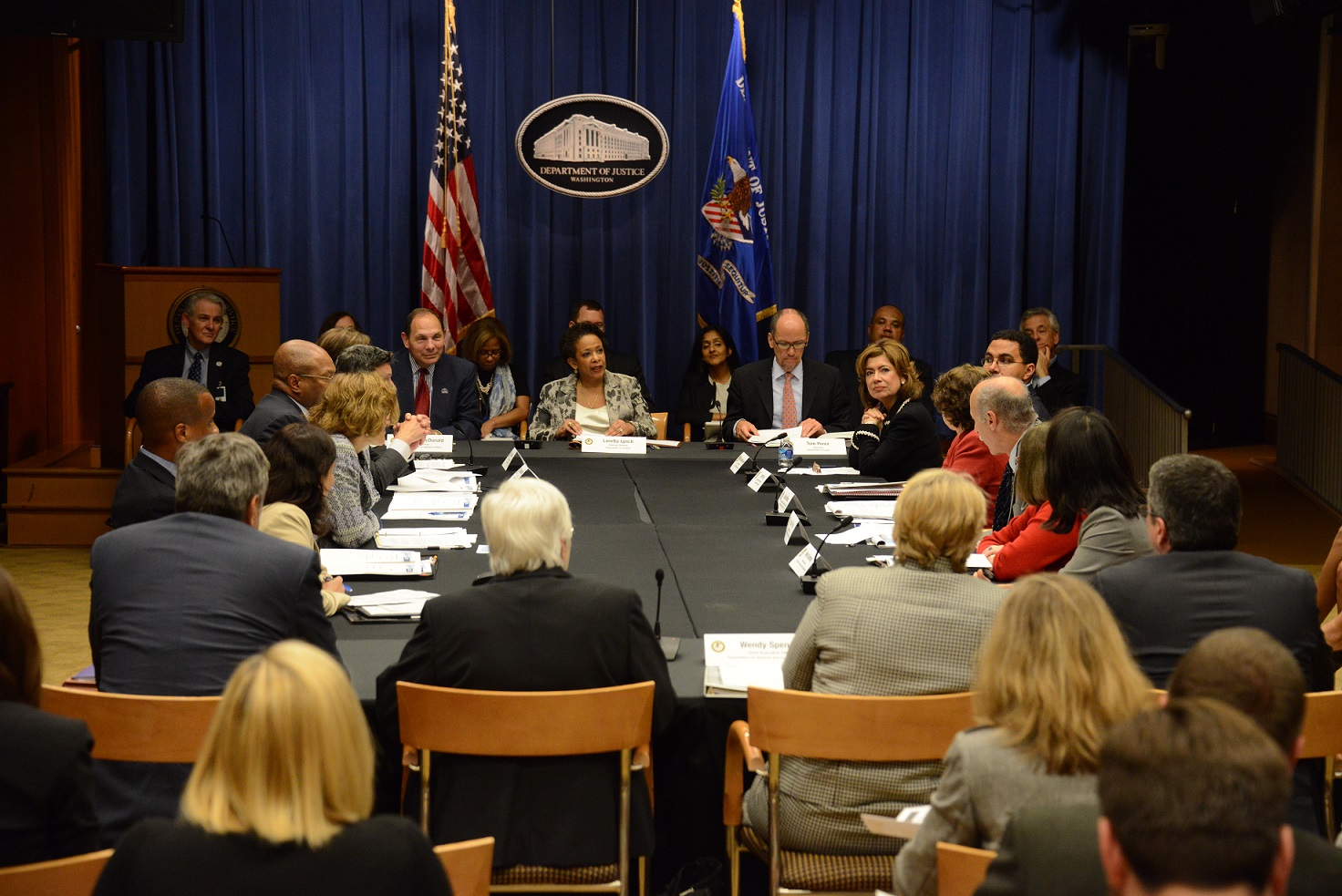 In January 2011, then U.S. Attorney General Eric Holder established a Cabinet-level federal interagency Reentry Council, representing a significant executive branch commitment to coordinating re-entry efforts and advancing effective re-entry policies. From 2011 to 2016, the Federal Interagency Reentry Council (FIRC) worked together to reduce recidivism and improve employment, education, housing, health and child welfare outcomes. Comprised of more than 20 federal agencies, the Reentry Council coordinated and leveraged existing federal resources targeted to reentry; used the bully pulpit to dispel myths, clarify policies, and provide visibility to programs and policies that work; and reduced the policy barriers to successful reentry.
In January 2011, then U.S. Attorney General Eric Holder established a Cabinet-level federal interagency Reentry Council, representing a significant executive branch commitment to coordinating re-entry efforts and advancing effective re-entry policies. From 2011 to 2016, the Federal Interagency Reentry Council (FIRC) worked together to reduce recidivism and improve employment, education, housing, health and child welfare outcomes. Comprised of more than 20 federal agencies, the Reentry Council coordinated and leveraged existing federal resources targeted to reentry; used the bully pulpit to dispel myths, clarify policies, and provide visibility to programs and policies that work; and reduced the policy barriers to successful reentry.
Featured Resources:
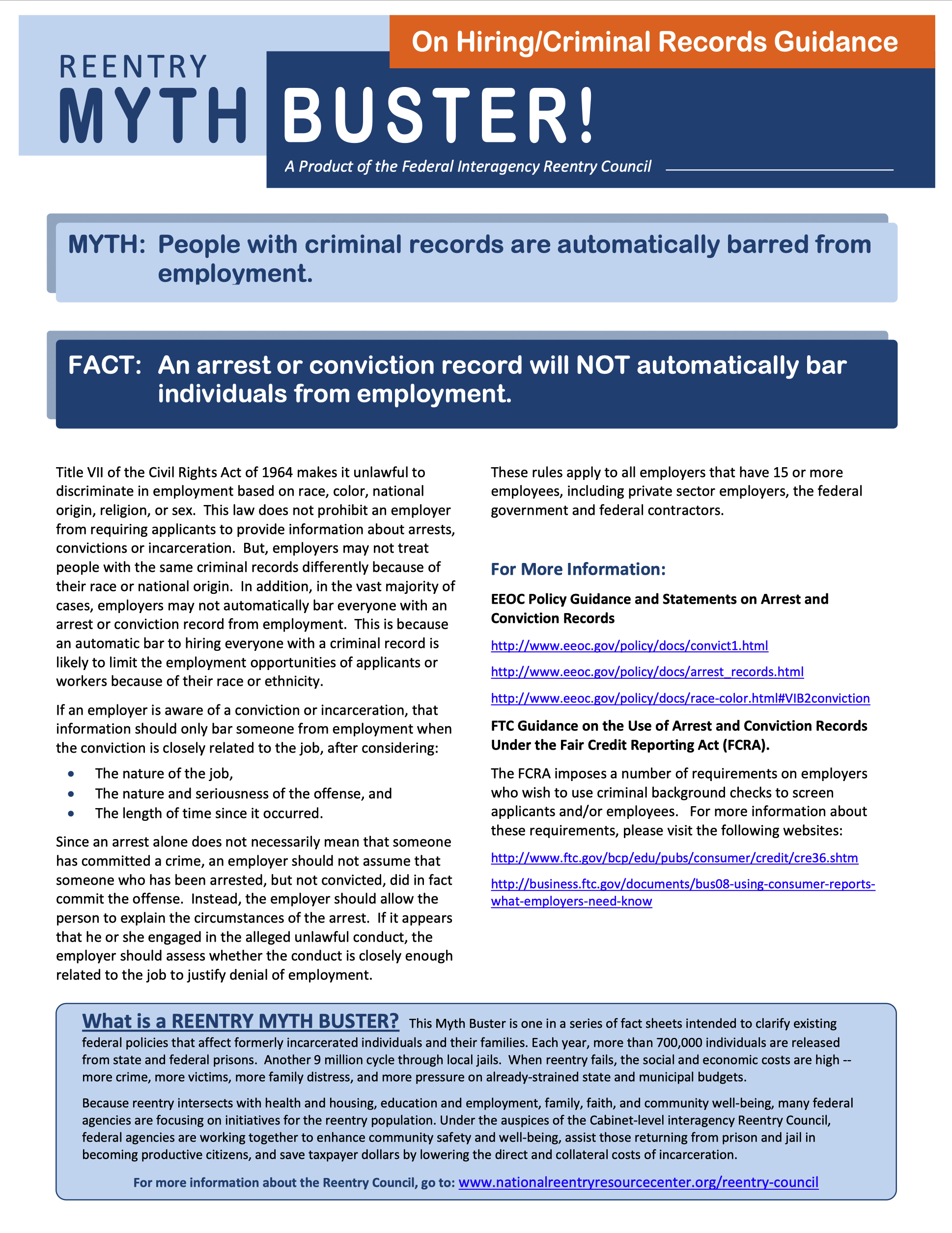 Reentry Myth Busters
Reentry Myth Busters
Reentry Myth Busters were developed by the Federal Interagency Reentry Council partner agencies. These fact sheet-style briefs were designed to clarify existing federal policies that affect individuals who were formerly incarcerated and their families in areas such as public housing, access to benefits, parental rights, employer incentives, Medicaid suspension/termination, and more.
Learn More About the FIRC
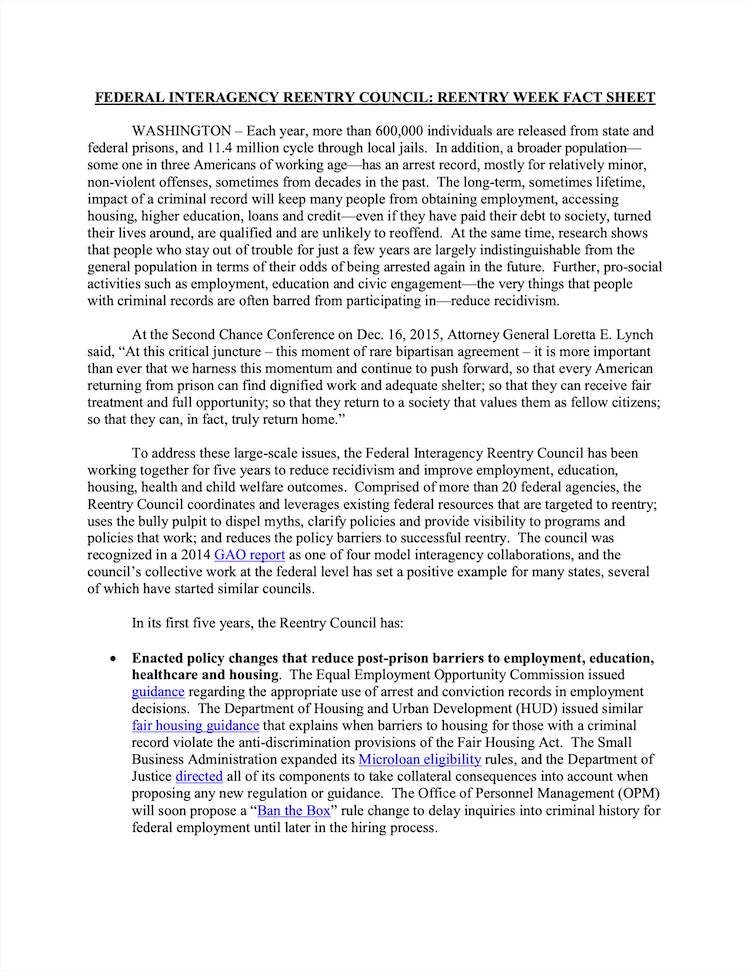 Federal Interagency Reentry Council Fact Sheet (2016)
Federal Interagency Reentry Council Fact Sheet (2016)
At the end of the first five years of the FIRC, the Council released this Fact Sheet discussing the work of the partner agencies to address the large-scale issues related to reducing recidivism and improving employment, education, housing, health, and child welfare outcomes.
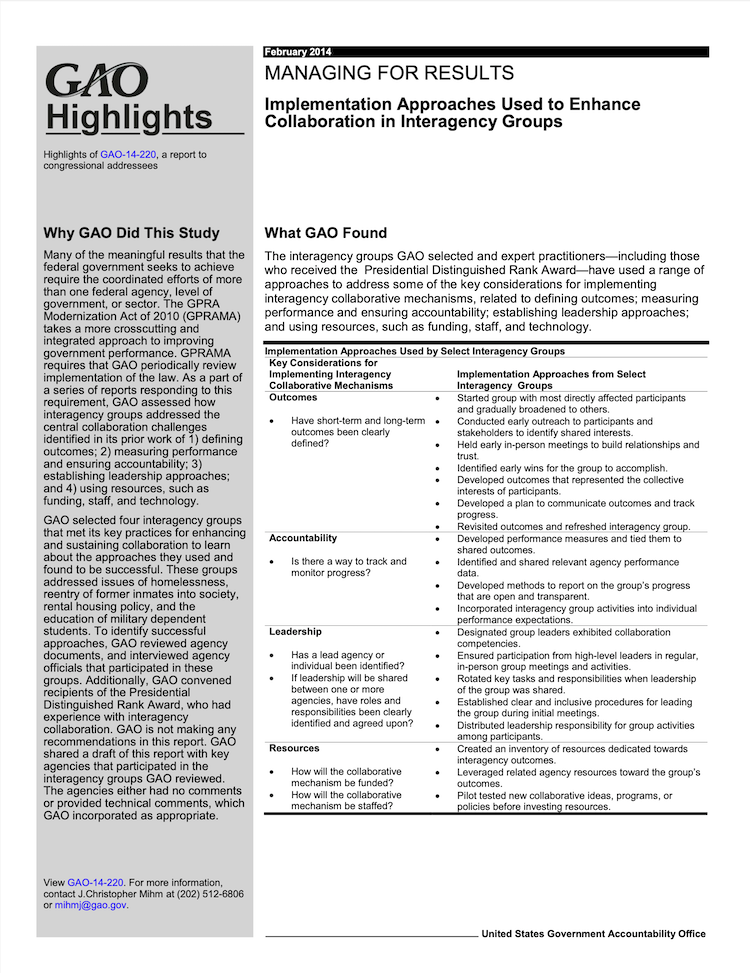 Managing for Results: Implementation Approaches Used to Enhance Collaboration in Interagency Groups (2014)
Managing for Results: Implementation Approaches Used to Enhance Collaboration in Interagency Groups (2014)
The FIRC was recognized in this 2014 Government Accountability Office report as one of four model interagency collaborations, with the council’s collective work setting a positive example for many states, several of which started similar councils.
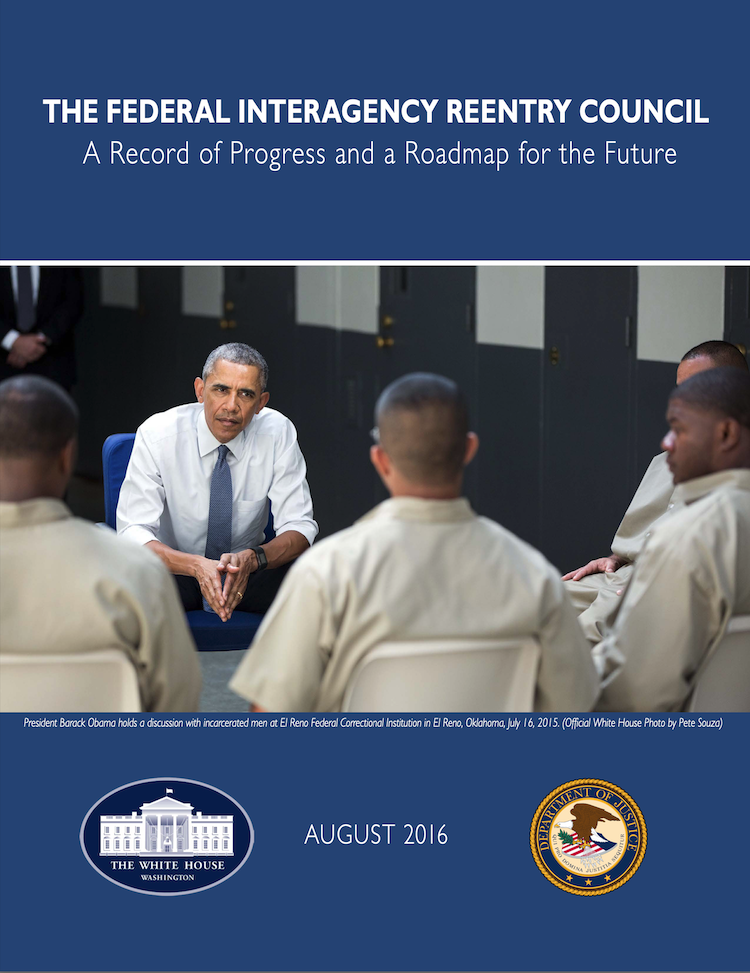 The Federal Interagency Reentry Council: A Record of Progress and a Roadmap for the Future (2016)
The Federal Interagency Reentry Council: A Record of Progress and a Roadmap for the Future (2016)
This report responds to the directive by laying out specific agency actions – development of training, technical assistance, and strategic communications – to ensure federal staff, as well as state, local, and community stakeholders, are aware of the tools available to them, and are using them to implement robust reentry policies and programs.
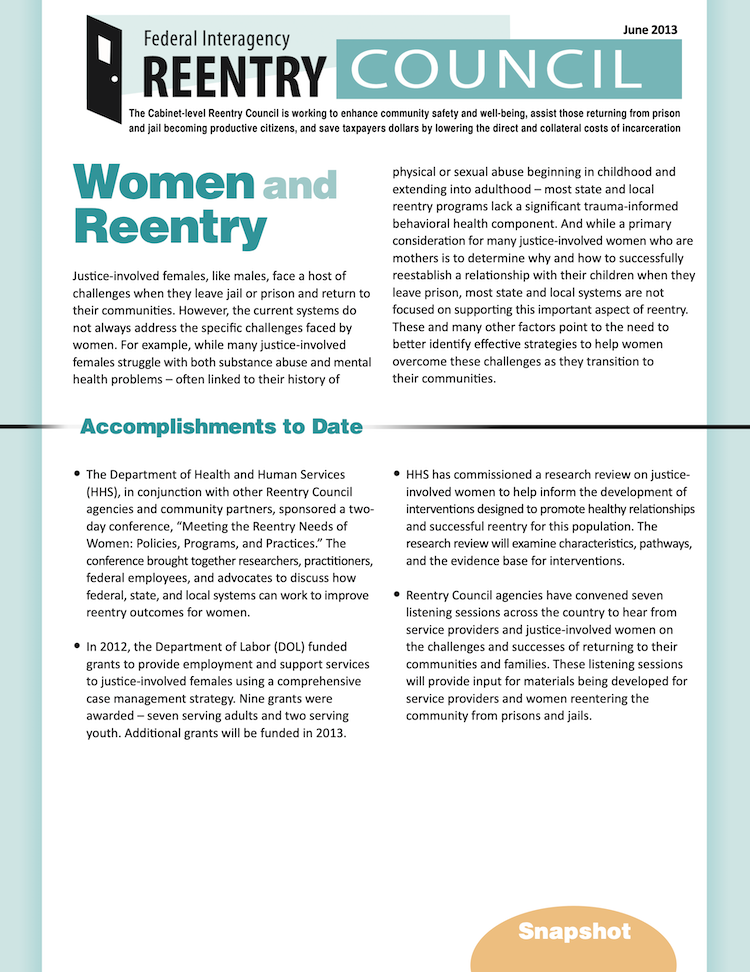 Women and Reentry (2013)
Women and Reentry (2013)
This brief outlines the FIRC's efforts to identify effective strategies to help women involved in the justice system overcome challenges as they transition to their communities.



